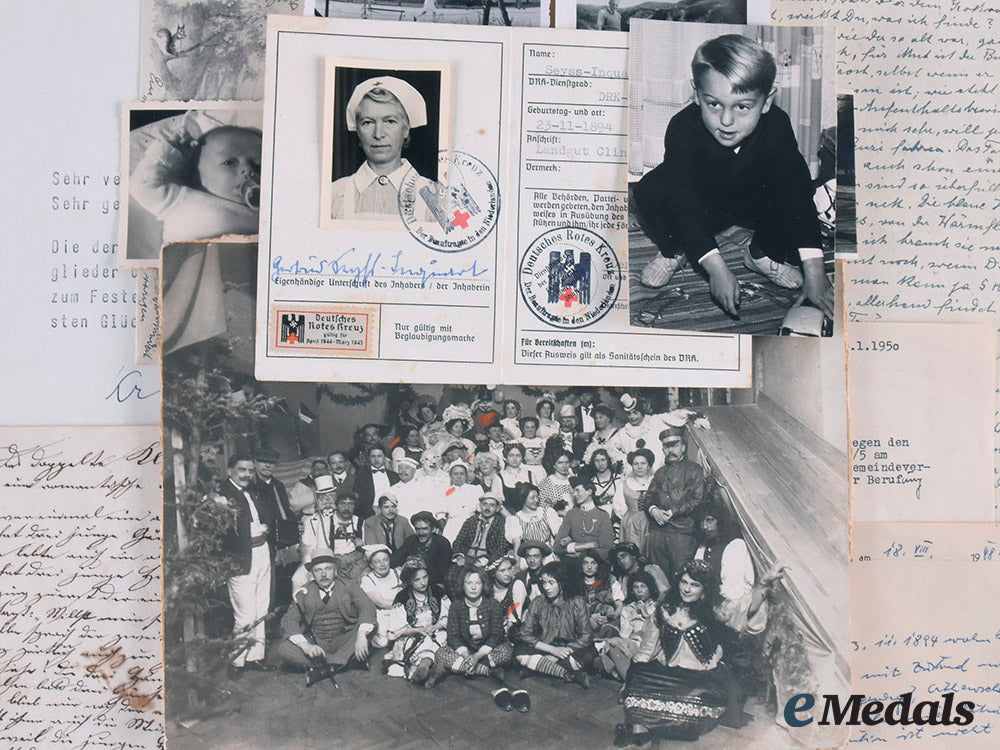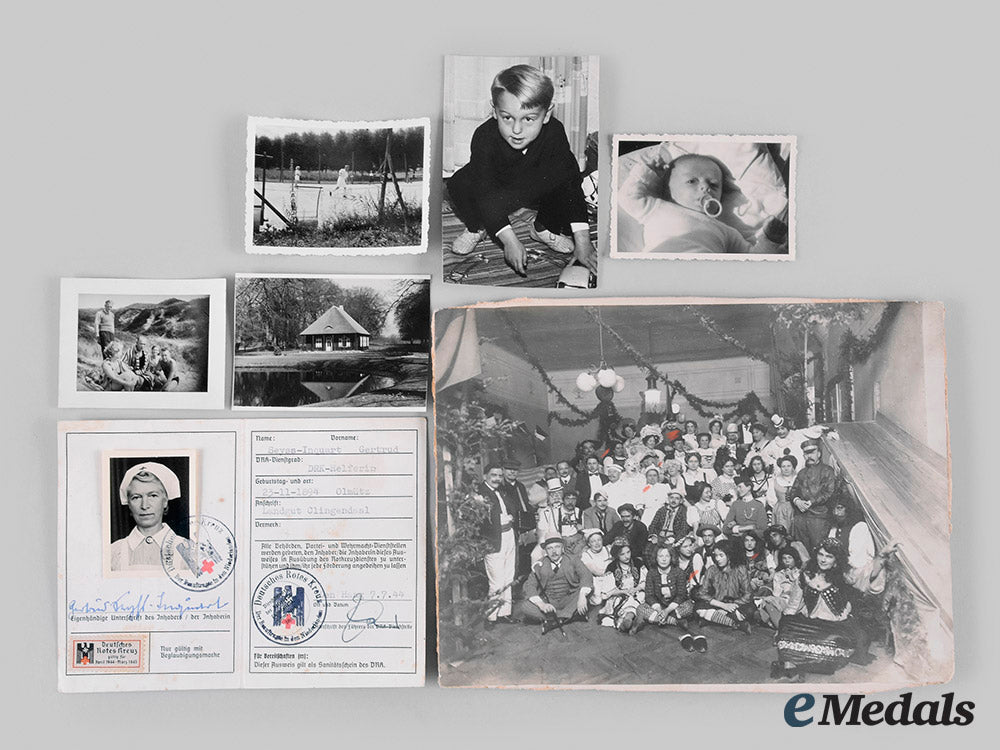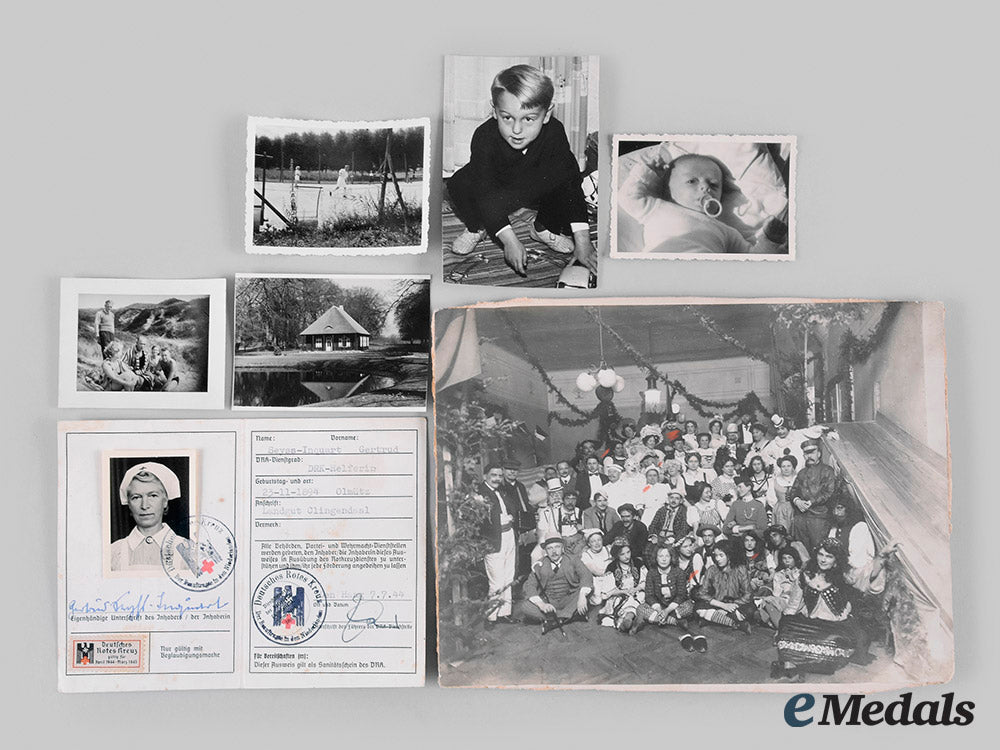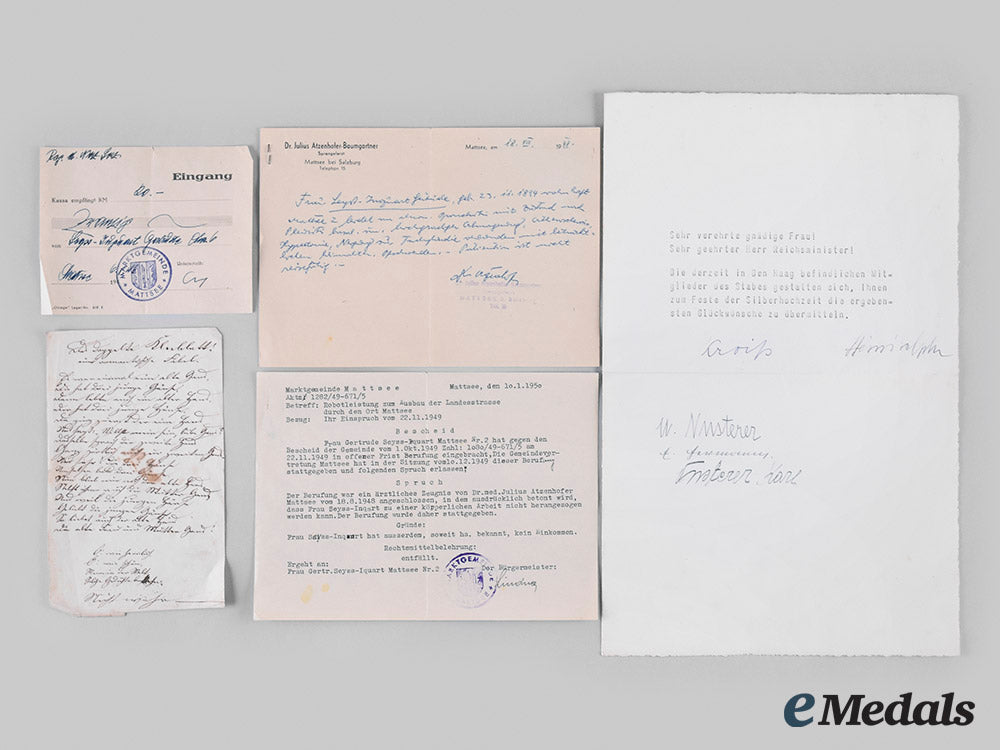
LOADING ...
In response to evolving domestic opinion, eMedals Inc has made the conscious decision to remove the presentation of German Third Reich historical artifacts from our online catalogue. For three decades, eMedals Inc has made an effort to preserve history in all its forms. As historians and researchers, we have managed sensitive articles and materials with the greatest of care and respect for their past and present social context. We acknowledge the growing sentiments put forth by the Canadian public and have taken proactive actions to address this opinion.
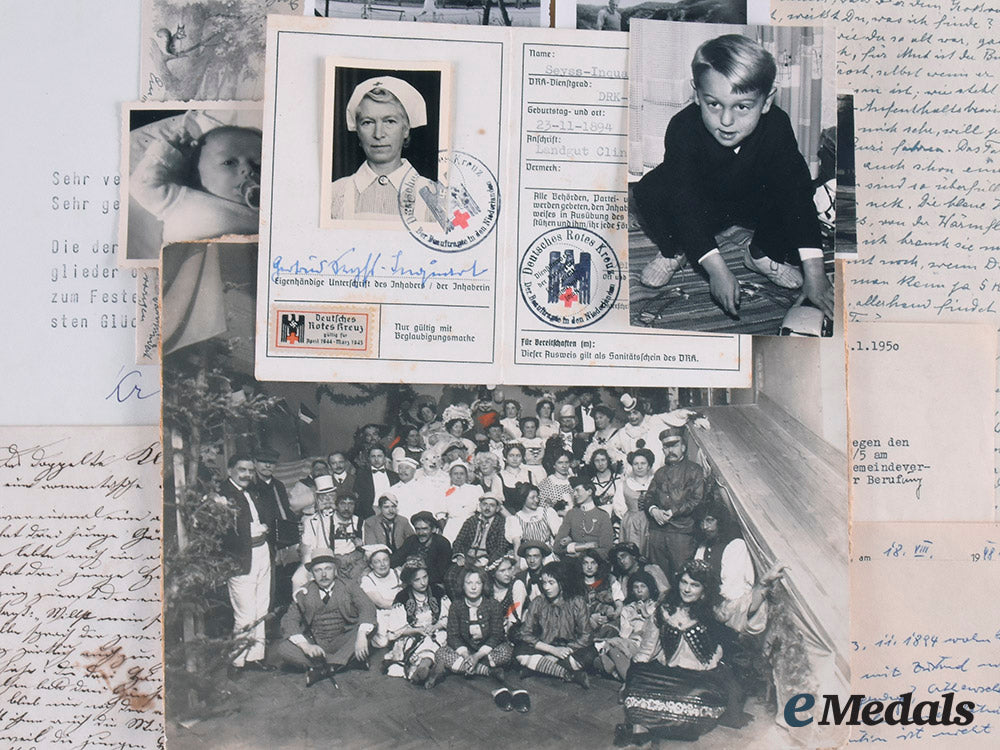
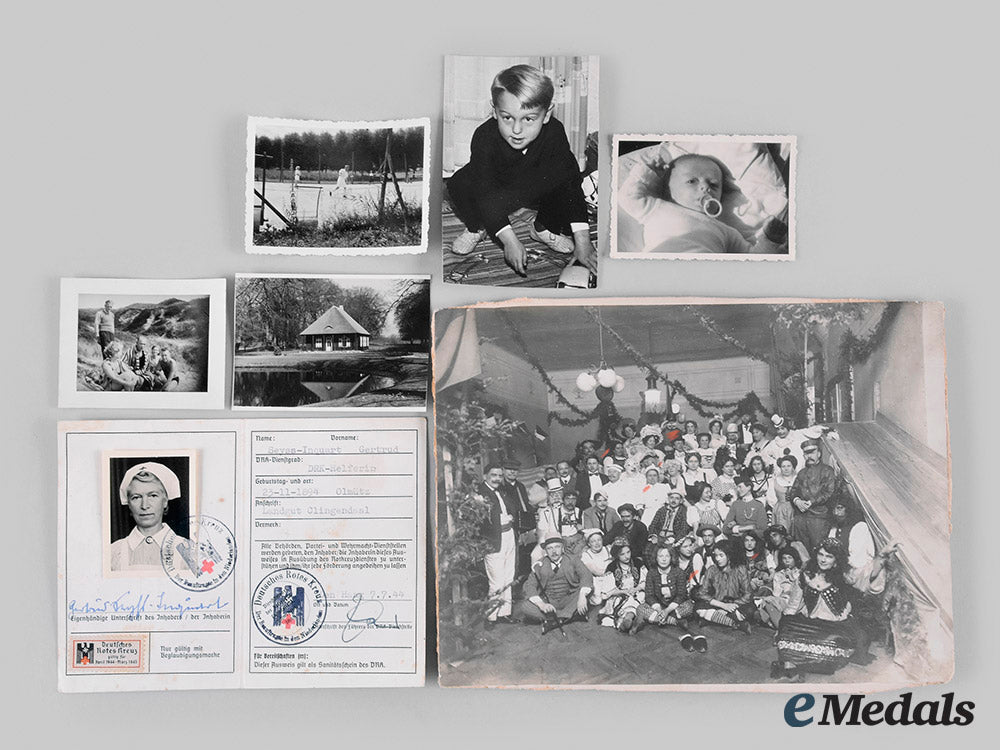
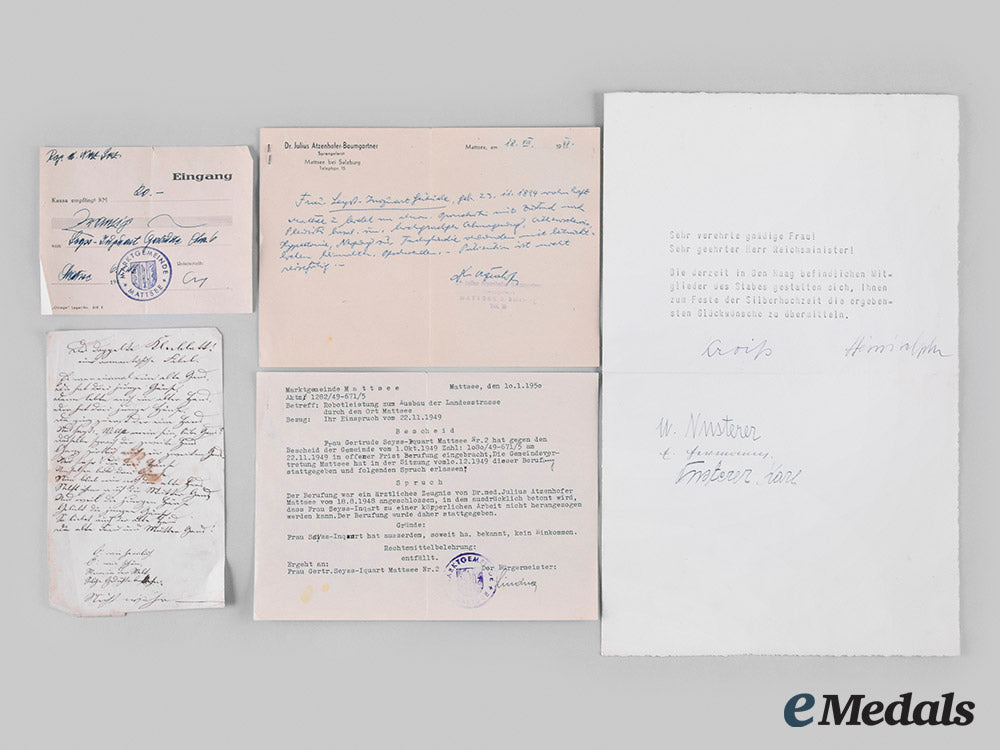
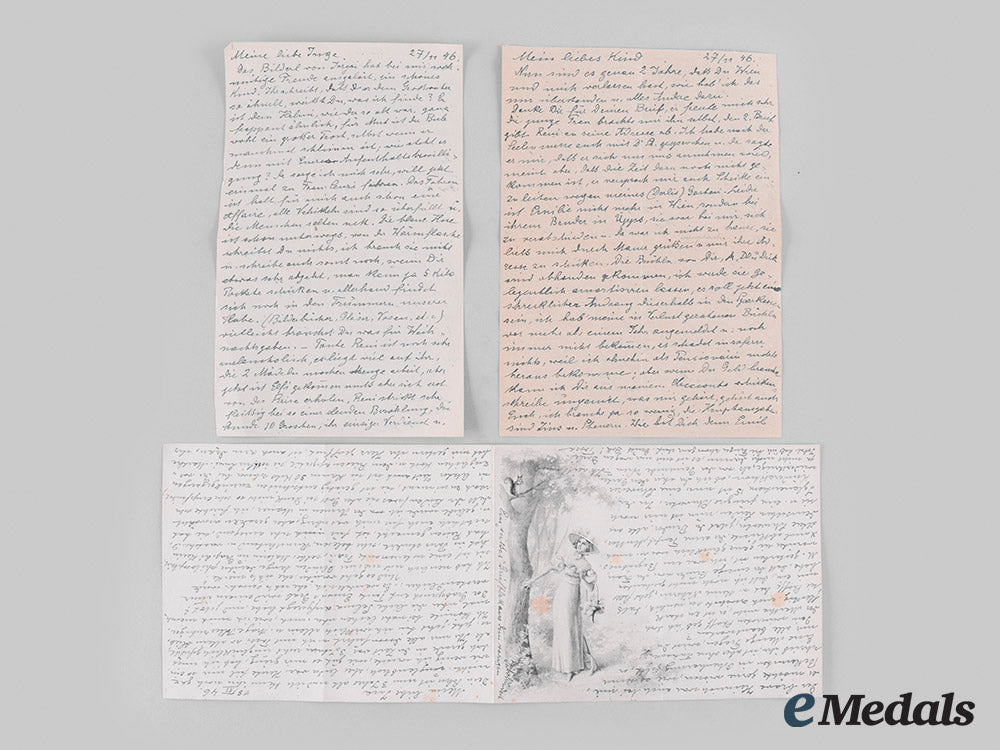
Germany, Nsdap. A Lot Of Documents Belonging To The Seyß-Inquart Family, C.1945
Germany, Nsdap. A Lot Of Documents Belonging To The Seyß-Inquart Family, C.1945
SKU: ITEM: G45736
Current Bid:
Your Max Bid:
Bid History:
Time Remaining:
Couldn't load pickup availability
Shipping Details
Shipping Details
eMedals offers rapid domestic and international shipping. Orders received prior to 12:00pm (EST) will be shipped on the same business day.* Orders placed on Canadian Federal holidays will be dispatched the subsequent business day. Courier tracking numbers are provided for all shipments. All items purchased from eMedals can be returned for a full monetary refund or merchandise credit, providing the criteria presented in our Terms & Conditions are met. *Please note that the addition of a COA may impact dispatch time.
Shipping Details
eMedals offers rapid domestic and international shipping. Orders received prior to 12:00pm (EST) will be shipped on the same business day.* Orders placed on Canadian Federal holidays will be dispatched the subsequent business day. Courier tracking numbers are provided for all shipments. All items purchased from eMedals can be returned for a full monetary refund or merchandise credit, providing the criteria presented in our Terms & Conditions are met. *Please note that the addition of a COA may impact dispatch time.
Description
Description
Congratulatory correspondence in regards to a wedding anniversary, presenting a central folding crease and scuffing at edges, measuring 222 mm (w) x 352 mm (h);
A letter from Dr. Julius Atzenhofer-Baumgartner, dated 18 August 1948, presenting a single folding crease and stapled at the top left corner, measuring 211 mm (w) x 150 mm (h);
A group photograph on a cardboard backer, five people in the picture are marked with orange, the reverse bears the names of the people marked, presenting scuffing at the edges, measuring 234 mm (w) x 180 mm (h);
Five photographs: the first of an infant with a pacifier in its mouth, measuring 97 mm (w) x 59 mm (h); the second of a young boy squatting and playing with toys, measuring 73 mm (w) x 107 mm (h); the third of a group of people with a hillside in the background, measuring 77 mm (w) x 60 mm (h); the fourth of a group of people playing a racquet sport, the reverse reads “In Holland 42”, measuring 86 mm (w) x 64 mm (h); the fifth of a small house with a pond at the front, measuring 90 mm (w) x 64 mm (h);
A German Red Cross identity card belonging to Gertrude Seyß-Inquart, dated 7 July 1944, stamped twice with the official seal of the German Red Cross, with a black and white identity photograph of Gertrude in the German Red Cross uniform, slight discolouration throughout, measuring 85 mm (w) x 124 mm (h);
Five handwritten letters on cream paper; the first with a drawing of a woman walking and a squirrel on a tree, presenting scattered discolouration, measuring 173 mm (w) x 133 mm (h), the second in ink and pencil, measuring 99 mm (w) x 53 mm (h); the third with a central folding crease, scuffing at edges and small ink smudges, measuring 110 mm (w) x 176 mm (h); the fourth and fifth date 27 November 1946, presenting two folding creases per page, minor scuffing at edges, measuring 150 mm (w) x 209 mm (h) and 129 mm (w) x 210 mm (h);
Correspondence from the town of Mattsee, stamped with the official seal of Mattsee, dated 1946, presenting a central folding crease, scuffing at edges, measuring 133 mm (w) x 106 mm (h);
Correspondence from the town of Mattsee in regards to Gertrude Seyß-Inquart being consulted for co-operative work, stamped with the seal of the town of Mattsee and signed, presenting a single folding crease and minor discolouration at the bottom left corner, measuring 213 mm (w) x 155 mm (h); all very fine.
Footnote:
Arthur Seyß-Inquart was born on July 22, 1892 in the village of Stannern (present-day Stonařov, southern Czech Republic) near the town of Iglau (Jihlava). This was a German speaking community within a Czech dominated area in Moravia, at the time part of the Austro-Hungarian empire. The family moved to Vienna in 1907.
Seyß-Inquart began to study law at the university of Vienna, and earned his degree during the First War in 1917 while recovering from being wounded. As a soldier in the Austro-Hungarian army he saw action in Russia, Romania, and Italy. He received several bravery decorations and at the end of the war held the rank of Oberleutnant (first lieutenant).
After the war, Seyß-Inquart developed close ties with several right wing and fascist organisations, among them the Vaterländische Front (Fatherland Front). He became a successful lawyer and had his own practice since 1921. In 1933, Seyß-Inquart went into Austrian politics and joined the cabinet of chancellor Engelbert Dollfuß.
Through growing influence and support by non other than A.H. himself, Seyß-Inquart eventually became Austrian Minister of the Interior in February of 1938. With the looming annexation of Austria by Germany in March of the same year, Austrian chancellor Schuschnigg stepped down. Seyß-Inquart was chosen as his successor due to immense pressure applied on the Austrian government by the NSDAP.
He served in this position for less than two days, until the Anschluss was completed. Seyß-Inquart signed the documents that legalised the annexation of Austria by Germany. After his office had ceased to exist, he was named Reichsstatthalter (Reich Governor) of the Ostmark, the newly created province that Austria had become as part of Greater Germany.
Being a fanatical anti-Semite, Seyß-Inquart almost immediately ordered the confiscation of Jewish property and had the Austrian Jews sent to concentration camps. He received the honorary SS rank of Gruppenführer in May of 1939, and would go on to become an SS-Obergruppenführer in 1941.
After the attack on Poland at the beginning of the Second War, Seyß-Inquart was named deputy to Hans Frank, the General Governor of occupied Poland. He supported Frank in the deportation of Polish Jews. Seyß-Inquart was also aware of the systematic murder of Polish intellectuals by the German secret service “Abwehr”.
In May of 1940, A.H. named Seyß-Inquart Reich Commissioner of the Netherlands. His policies concerning the Dutch Jews were no different than his policies had been concerning the Jews in Austria and Poland, in that they were ousted from governmental, and leading press and industry positions, their property seized, before being sent to concentration camps. Of the 140,000 Jews that were registered in the Netherlands in 1941, only 30,000 survived the war.
During his reign of terror, Seyß-Inquart also authorized the execution of at least 800 people, ranging from political prisoners to resistance fighters. At the end of the war, he was arrested by Allied forces and became one of the 24 defendants during the Nuremberg trials against the major war criminals. Seyß-Inquart was found guilty in three out of four charges and executed by hanging on October 16, 1946.
Description
Congratulatory correspondence in regards to a wedding anniversary, presenting a central folding crease and scuffing at edges, measuring 222 mm (w) x 352 mm (h);
A letter from Dr. Julius Atzenhofer-Baumgartner, dated 18 August 1948, presenting a single folding crease and stapled at the top left corner, measuring 211 mm (w) x 150 mm (h);
A group photograph on a cardboard backer, five people in the picture are marked with orange, the reverse bears the names of the people marked, presenting scuffing at the edges, measuring 234 mm (w) x 180 mm (h);
Five photographs: the first of an infant with a pacifier in its mouth, measuring 97 mm (w) x 59 mm (h); the second of a young boy squatting and playing with toys, measuring 73 mm (w) x 107 mm (h); the third of a group of people with a hillside in the background, measuring 77 mm (w) x 60 mm (h); the fourth of a group of people playing a racquet sport, the reverse reads “In Holland 42”, measuring 86 mm (w) x 64 mm (h); the fifth of a small house with a pond at the front, measuring 90 mm (w) x 64 mm (h);
A German Red Cross identity card belonging to Gertrude Seyß-Inquart, dated 7 July 1944, stamped twice with the official seal of the German Red Cross, with a black and white identity photograph of Gertrude in the German Red Cross uniform, slight discolouration throughout, measuring 85 mm (w) x 124 mm (h);
Five handwritten letters on cream paper; the first with a drawing of a woman walking and a squirrel on a tree, presenting scattered discolouration, measuring 173 mm (w) x 133 mm (h), the second in ink and pencil, measuring 99 mm (w) x 53 mm (h); the third with a central folding crease, scuffing at edges and small ink smudges, measuring 110 mm (w) x 176 mm (h); the fourth and fifth date 27 November 1946, presenting two folding creases per page, minor scuffing at edges, measuring 150 mm (w) x 209 mm (h) and 129 mm (w) x 210 mm (h);
Correspondence from the town of Mattsee, stamped with the official seal of Mattsee, dated 1946, presenting a central folding crease, scuffing at edges, measuring 133 mm (w) x 106 mm (h);
Correspondence from the town of Mattsee in regards to Gertrude Seyß-Inquart being consulted for co-operative work, stamped with the seal of the town of Mattsee and signed, presenting a single folding crease and minor discolouration at the bottom left corner, measuring 213 mm (w) x 155 mm (h); all very fine.
Footnote:
Arthur Seyß-Inquart was born on July 22, 1892 in the village of Stannern (present-day Stonařov, southern Czech Republic) near the town of Iglau (Jihlava). This was a German speaking community within a Czech dominated area in Moravia, at the time part of the Austro-Hungarian empire. The family moved to Vienna in 1907.
Seyß-Inquart began to study law at the university of Vienna, and earned his degree during the First War in 1917 while recovering from being wounded. As a soldier in the Austro-Hungarian army he saw action in Russia, Romania, and Italy. He received several bravery decorations and at the end of the war held the rank of Oberleutnant (first lieutenant).
After the war, Seyß-Inquart developed close ties with several right wing and fascist organisations, among them the Vaterländische Front (Fatherland Front). He became a successful lawyer and had his own practice since 1921. In 1933, Seyß-Inquart went into Austrian politics and joined the cabinet of chancellor Engelbert Dollfuß.
Through growing influence and support by non other than A.H. himself, Seyß-Inquart eventually became Austrian Minister of the Interior in February of 1938. With the looming annexation of Austria by Germany in March of the same year, Austrian chancellor Schuschnigg stepped down. Seyß-Inquart was chosen as his successor due to immense pressure applied on the Austrian government by the NSDAP.
He served in this position for less than two days, until the Anschluss was completed. Seyß-Inquart signed the documents that legalised the annexation of Austria by Germany. After his office had ceased to exist, he was named Reichsstatthalter (Reich Governor) of the Ostmark, the newly created province that Austria had become as part of Greater Germany.
Being a fanatical anti-Semite, Seyß-Inquart almost immediately ordered the confiscation of Jewish property and had the Austrian Jews sent to concentration camps. He received the honorary SS rank of Gruppenführer in May of 1939, and would go on to become an SS-Obergruppenführer in 1941.
After the attack on Poland at the beginning of the Second War, Seyß-Inquart was named deputy to Hans Frank, the General Governor of occupied Poland. He supported Frank in the deportation of Polish Jews. Seyß-Inquart was also aware of the systematic murder of Polish intellectuals by the German secret service “Abwehr”.
In May of 1940, A.H. named Seyß-Inquart Reich Commissioner of the Netherlands. His policies concerning the Dutch Jews were no different than his policies had been concerning the Jews in Austria and Poland, in that they were ousted from governmental, and leading press and industry positions, their property seized, before being sent to concentration camps. Of the 140,000 Jews that were registered in the Netherlands in 1941, only 30,000 survived the war.
During his reign of terror, Seyß-Inquart also authorized the execution of at least 800 people, ranging from political prisoners to resistance fighters. At the end of the war, he was arrested by Allied forces and became one of the 24 defendants during the Nuremberg trials against the major war criminals. Seyß-Inquart was found guilty in three out of four charges and executed by hanging on October 16, 1946.

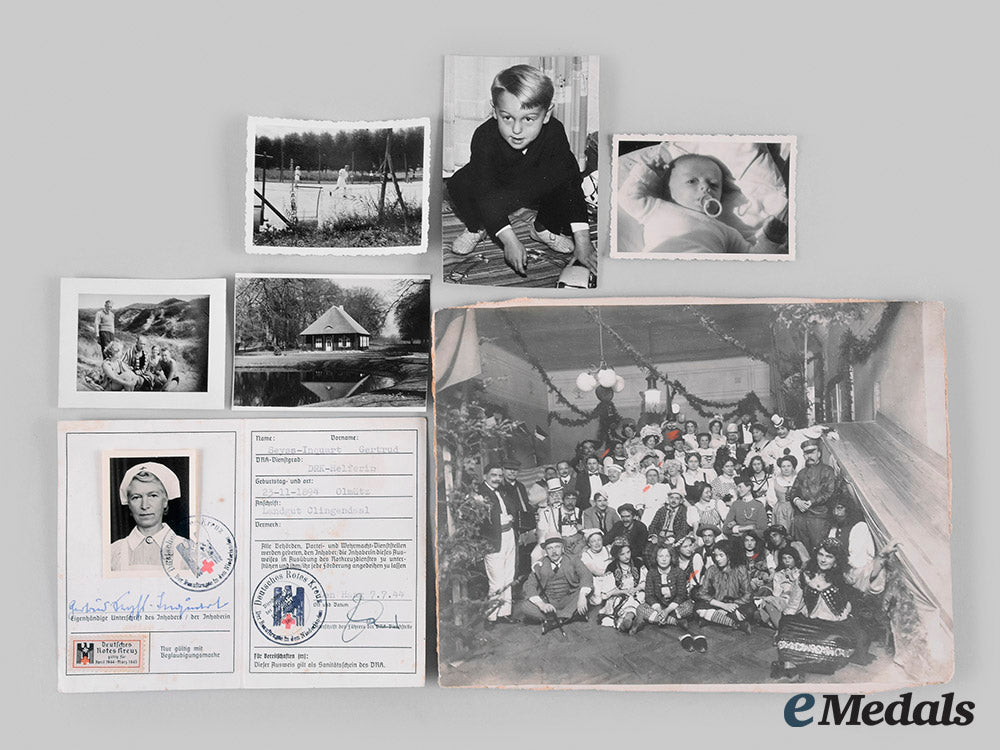
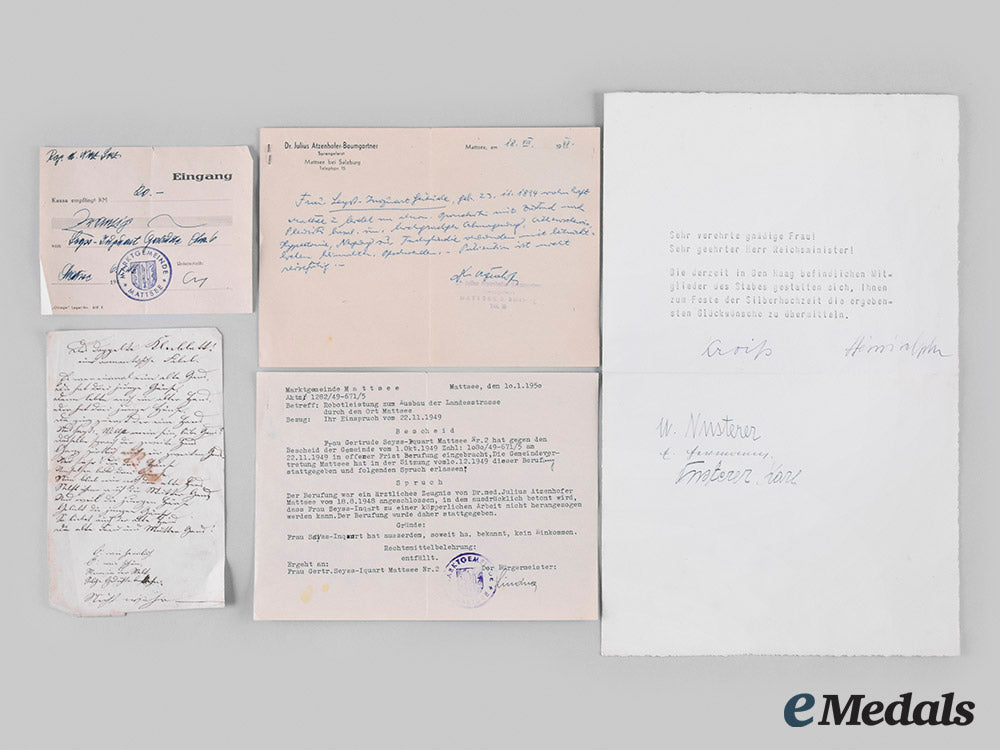
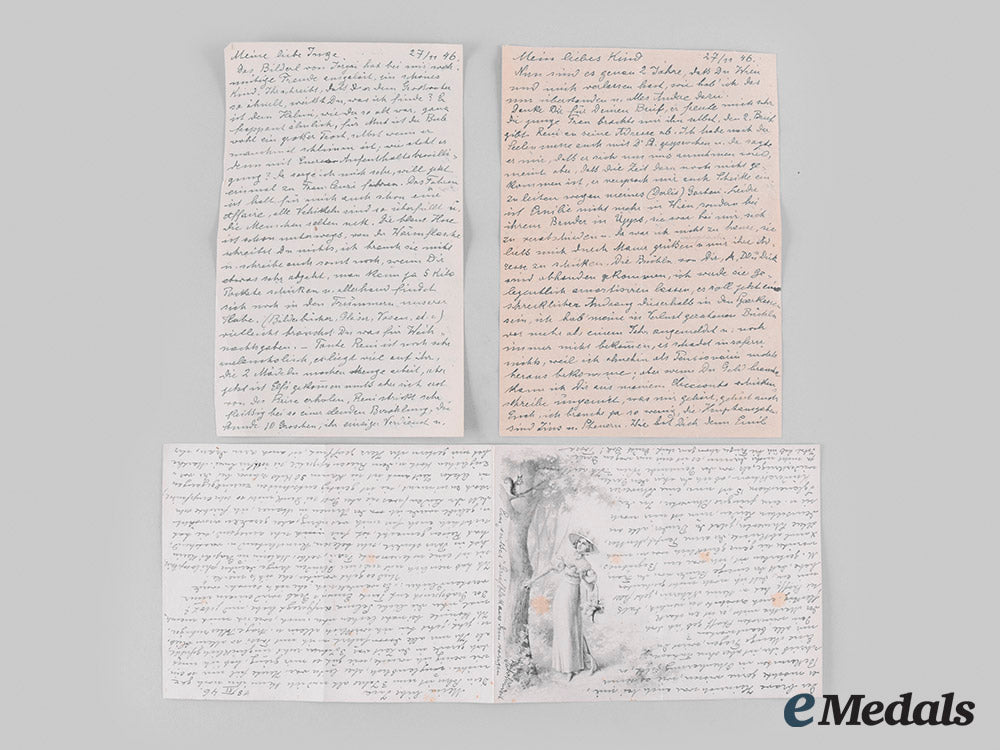
You May Also Like
Germany, Third Reich. A Mixed Lot of Tyrolean Marksmanship Badges
G52930
Germany, SS. An Estonian Waffen-SS Volunteer’s Sleeve Shield
G50381
Germany, SS. A Waffen-SS Sturmmann Sleeve Insignia
G52846
Germany, Third Reich; Slovakia, First Republic. A Mixed Lot of Wartime Postcards
G52905
Germany, Third Reich. A Pair of Tyrolean Marksmanship Badges
G52981
-
Germany, Third Reich. A Mixed Lot of Tyrolean Marksmanship Badges
G52930
Add to CartRegular price $135 USDRegular price $0 USD Sale price $135 USDUnit price / per -
Germany, SS. An Estonian Waffen-SS Volunteer’s Sleeve Shield
G50381
Add to CartRegular price $150 USDRegular price $0 USD Sale price $150 USDUnit price / per -
Germany, SS. A Waffen-SS Sturmmann Sleeve Insignia
G52846
Add to CartRegular price $135 USDRegular price $0 USD Sale price $135 USDUnit price / per -
Germany, Third Reich; Slovakia, First Republic. A Mixed Lot of Wartime Postcards
G52905
Add to CartRegular price $135 USDRegular price $0 USD Sale price $135 USDUnit price / per -
Germany, Third Reich. A Pair of Tyrolean Marksmanship Badges
G52981
Add to CartRegular price $135 USDRegular price $0 USD Sale price $135 USDUnit price / per
Do you have a similar item you are interested in selling?
Please complete the form and our client care representatives will contact you.
Sell Item